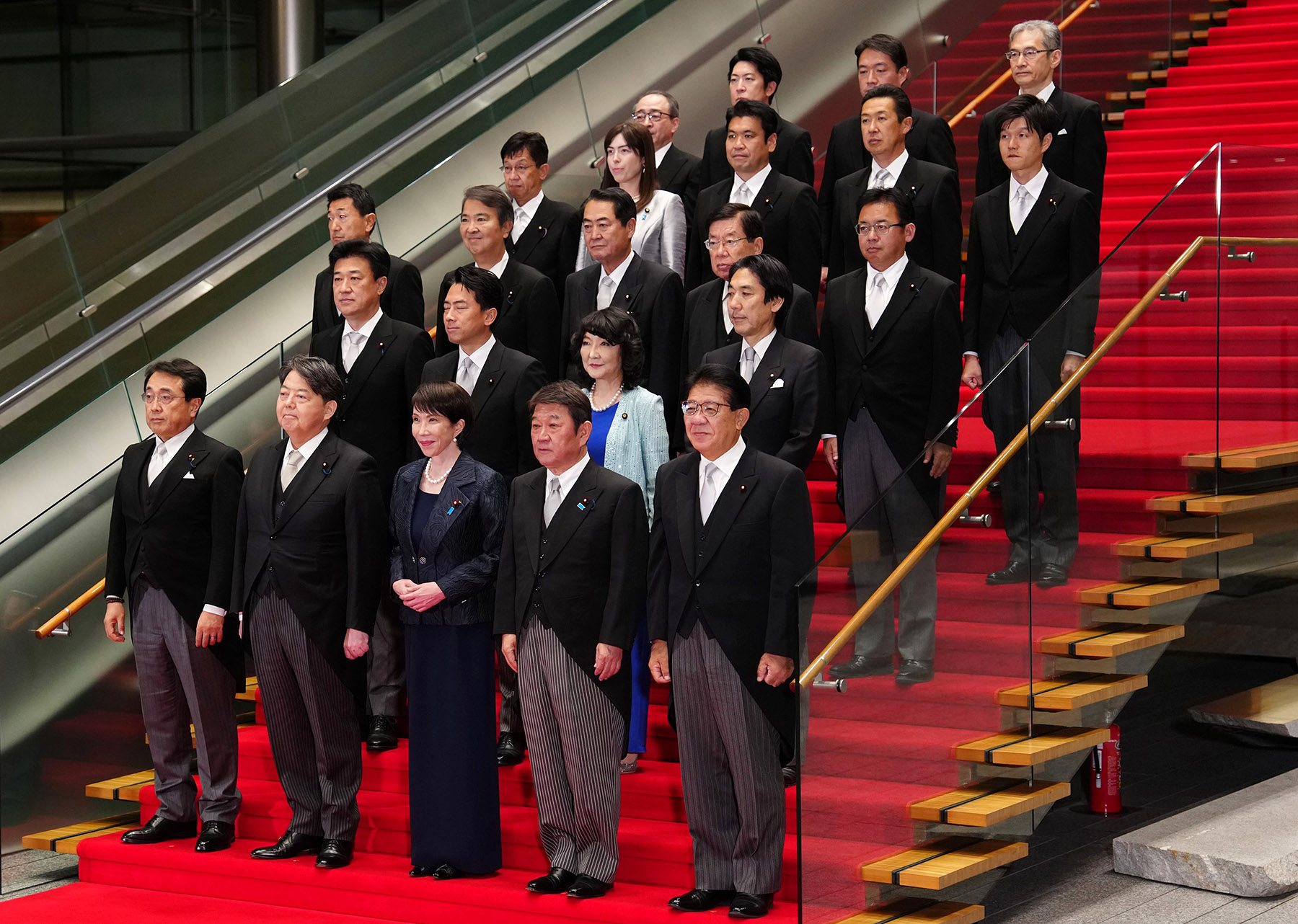Alliance's rigid orientation could reshape defense posture: Experts

Both the Cabinet of Japan's new Prime Minister Sanae Takaichi and her coalition partner, the Japan Innovation Party, reflect a distinctly conservative orientation with a focus on economic and security priorities, experts say.
At her inaugural news conference on Tuesday, Takaichi said her Liberal Democratic Party and the JIP would work "hand in hand" on key policy areas outlined in their coalition agreement, including cost-of-living measures, a backup system for the capital's functions, social security reform, and constitutional revision.
Kumiko Haba, a professor at Josai International University in Togane, Japan, said the LDP-JIP alliance is more right-leaning and conservative than the LDP's previous coalition with the Komeito party.
READ MORE: Sanae Takaichi elected Japan PM, unveils cabinet lineup
The current partnership stems largely from their aligned policy orientations, Haba said. By endorsing the JIP's proposals, such as the "sub-capital concept" centered on Osaka and the "anti-espionage bill", Takaichi can more easily advance conservative policies, she added.
Earlier this month, the Komeito withdrew from the ruling coalition, citing the LDP's "insufficient" response to a high-profile political funding scandal. Before the split, the two parties had also clashed over policies related to foreigners and visits to the Yasukuni Shrine, which glorifies Japan's wartime militarism by honoring 14 convicted Class-A World War II criminals.
Haba said these issues have long been points of public concern and areas of weakness for the LDP.
Had the LDP-Komeito coalition continued, Takaichi would have been forced to maintain a centrist stance on such matters under Komeito's influence. Now her administration has greater freedom to advance right-leaning policies, and communication channels with China have been weakened, Haba said.
If Takaichi adopts a hard-line stance on historical recognition, Japan's China policy could shift "further to the right" than it did under former prime minister Shigeru Ishiba, she added.
Noriyuki Kawamura, an emeritus professor at Nagoya University of Foreign Studies, said the JIP, which advocates constitutional revision and stronger defense capabilities, could become an "accelerator", pushing the government further to the right following its alliance with the LDP.
Although the Komeito holds a limited number of parliamentary seats, it has long served as a "brake "on security policies, restraining the LDP and keeping Japan aligned with the constitutionally established principle of "exclusive defense", Kawamura said.
After her election, Takaichi quickly unveiled her new Cabinet, assigning key posts to the four rivals she faced in the LDP leadership contest. Shinjiro Koizumi was appointed defense minister, and Toshimitsu Motegi returns as foreign minister.
The other two appointments are Yoshimasa Hayashi as minister of internal affairs and communications, and Takayuki Kobayashi, who continues to serve as the LDP's policy chief. Another notable pick is former defense minister Minoru Kihara, who takes on the role of chief cabinet secretary.
Consolidating power
Haba said the appointments demonstrate a deliberate effort to consolidate power by maintaining a "balance of personnel".
Within the LDP, Takaichi initially drew criticism for appointing numerous members from the Taro Aso faction. However, by assigning key positions to all her former leadership rivals, she signaled an intention to foster party unity, Haba said.
At the news conference, Takaichi characterized her Cabinet as one of "decisiveness and progress".
Kawamura said that among all LDP administrations, Takaichi's Cabinet is the most conservative and hard-line — or hawkish and right-leaning — with a noticeably clearer policy orientation.
ALSO READ: Japan’s Takaichi orders economic package to tackle inflation
A cause for concern is that the new administration may actively pursue constitutional revision and military expansion — objectives that even the late prime minister Shinzo Abe's government failed to realize, he said. Takaichi has described herself as an inheritor of Abe's legacy.
None of the JIP members were included in the new Cabinet, in line with the agreement reached when the two parties formed their coalition.
The LDP-JIP partnership is considered an extra-cabinet arrangement rather than a formal coalition government. As a result, the JIP cannot be expected to support all government legislation. Haba said the party's position may vary depending on the issue, which means the alliance carries inherent uncertainties.
The move is widely seen as a "disengagement strategy" by the JIP, allowing it to maintain distance from the LDP and withdraw if policy differences emerge or public opinion shifts, Xinhua News Agency said.
Contact the writers at houjunjie@chinadaily.com.cn


